Charcoal pencils are a favorite tool among drawing artists for their rich, dark lines and versatility. These pencils blend the expressive potential of traditional charcoal with the precision of a pencil, making them perfect for a range of artistic styles. From capturing quick sketches to producing detailed, finished pieces, charcoal pencils are indispensable for artists. This guide aims to familiarize you with the essentials of charcoal pencils, helping you understand their types, uses, and maintenance for optimal artistic expression.
Understanding Charcoal Pencil Types
Soft, Medium, and Hard Charcoal Pencils
Charcoal pencils come in a variety of hardness levels, which affect the darkness and ease of application. Soft charcoal pencils deliver the darkest, richest lines but are also the most prone to smudging. Medium charcoal pencils strike a balance, offering rich darks with more control, while hard charcoal pencils provide the lightest shades and are excellent for fine, sharp lines. Most artists keep a range of these on hand to vary textures and tones in their work.
Specialty Charcoal Pencils
Aside from the usual soft, medium, and hard varieties, there are specialty charcoal pencils, such as white charcoal pencils for highlights and contrast work, and tinted charcoal pencils that offer colors other than black or gray. These can add a unique dimension to your work and expand the scope of charcoal as a medium. Experimenting with these can bring new life to your drawings and an unexpected twist to traditional charcoal artistry.
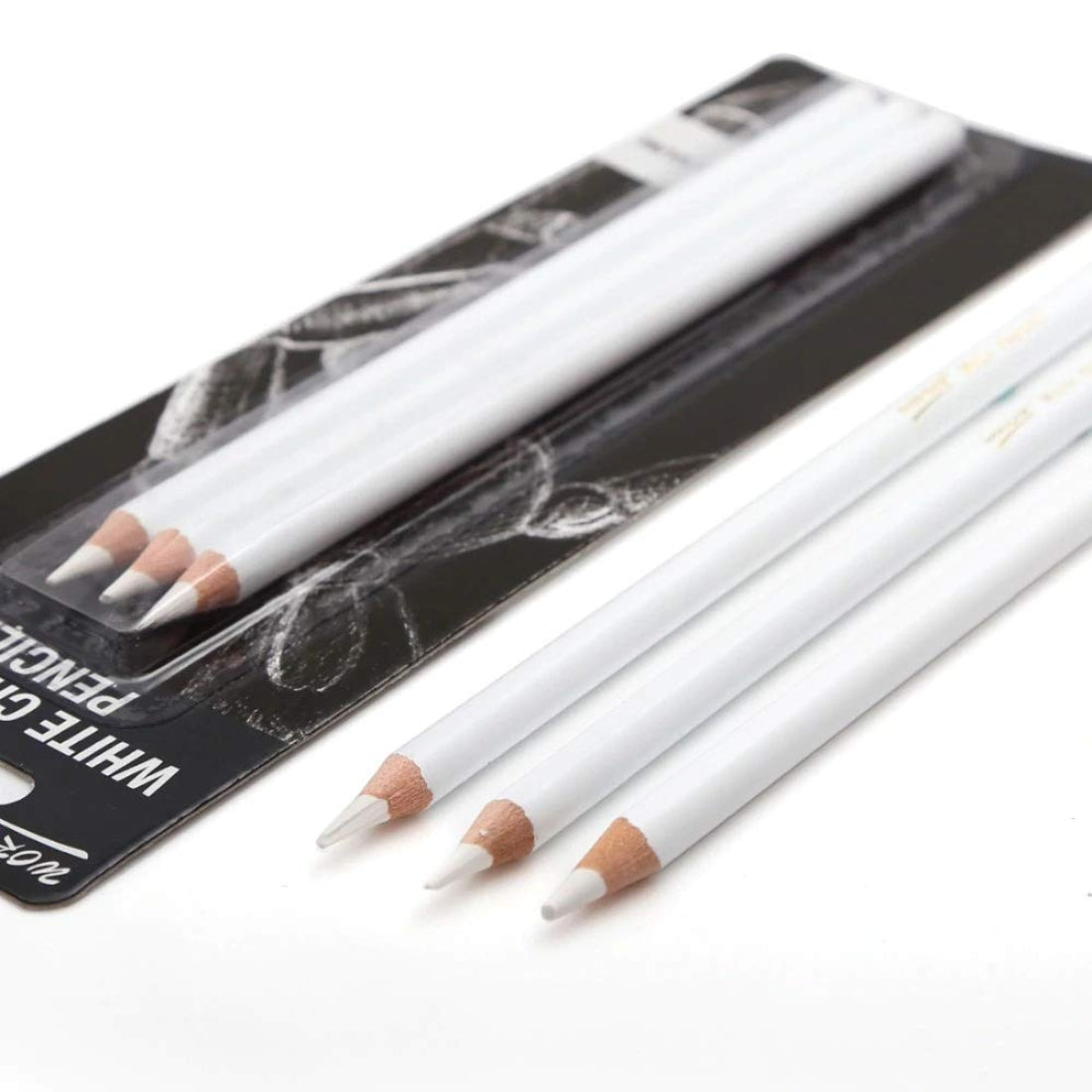
Techniques and Applications
Sketching and Blocking In
Charcoal pencils are perfect for sketching out the general shape and composition of your drawing. Using a soft or medium pencil, you can quickly lay down the groundwork for your piece. This phase is all about capturing the broad strokes without worrying about detail. You can also block in shadows with the side of the charcoal tip, creating a map of light and dark areas in your composition.
Detail Work and Refinement
For detailed work such as adding texture or definitive lines, switching to a medium or hard charcoal pencil is advisable. The finer tip allows for precise control and subtler shading, perfect for capturing the intricacies of your subject matter. Charcoal pencils also allow for layering, so you can build up the darkness gradually to achieve a broad range of tones.
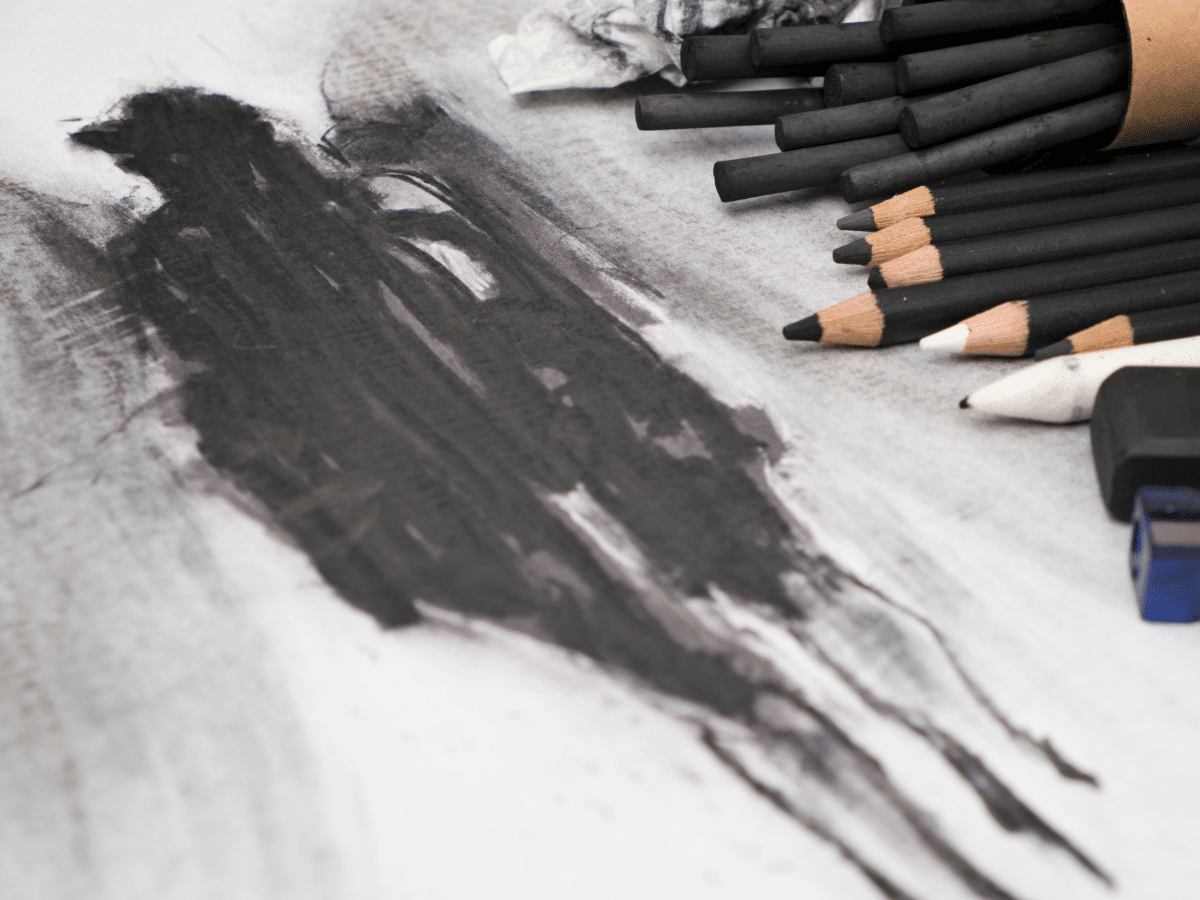
Sharpening and Care
Keeping Charcoal Pencils Sharp
To unlock the full potential of your charcoal pencils, keeping them sharp is essential. A standard sharpener may work, but for the best results, use a sandpaper pad to refine the point without wasting too much of the charcoal. This will give you a fine tip for detailed work while also creating a taper on the pencil for broader strokes.
Preventing Breakage and Smudging
Charcoal pencils can be fragile and prone to breakage if not cared for properly. Store them carefully, and avoid dropping them, as this can shatter the charcoal inside the wood casing. When working on a piece, keep a clean cloth or tissue on hand to clean the tip of excess charcoal dust, which can prevent unintentional smudging on your work.
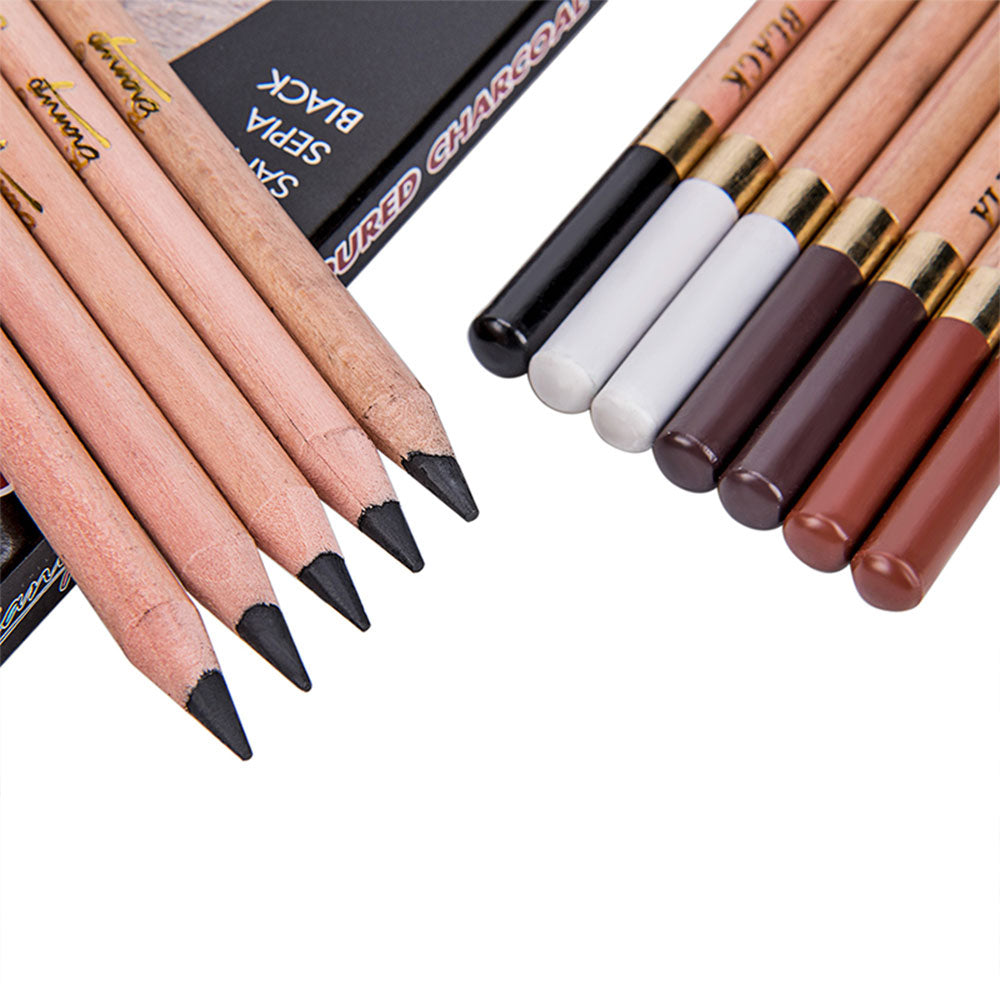
Preservation and Fixatives
Protecting Your Artwork
Once your masterpiece is complete, it’s essential to preserve it correctly. Charcoal can easily smudge or transfer to other surfaces, so a fixative spray is crucial. There are two types of fixatives: workable and final. Workable fixatives allow you to continue drawing after application, while final fixatives seal your work permanently and should only be used when you’re completely satisfied with your piece.
Storing and Displaying Drawings
Proper storage is as important as the application of a fixative. Keep your charcoal drawings flat in a drawer or portfolio, ideally with a protective cover sheet to prevent smudging. When displaying, framing behind glass is best, protecting the drawing from dust, touch, and environmental damage. Ensure the drawing doesn’t directly touch the glass, as this can lead to smudging or sticking; instead, use a matte to create space.
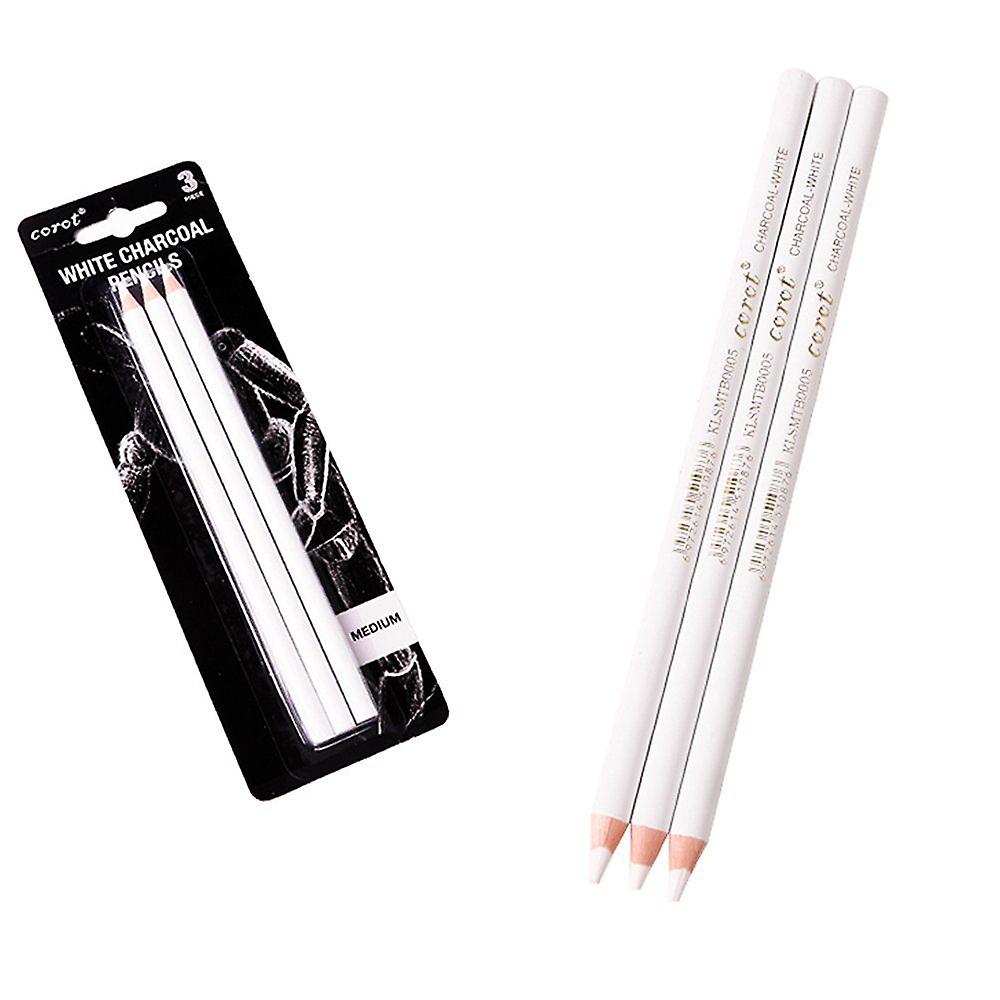
Maximizing Your Charcoal Pencil Techniques
Layering and Blending for Depth
Charcoal pencils excel in layering, allowing artists to create depth and dimension in their work. Start with a lighter application, using a harder pencil, and gradually build up to your darkest shadows with a softer one. By controlling pressure, you can create seamless transitions between shades. To blend these layers, use a blending stump or a piece of felt to smooth the charcoal, this will create a more cohesive look and can bring out the textures in your subject.
Expressive Mark-Making
Charcoal pencils are versatile when it comes to expressive mark-making. They can produce a variety of strokes based on how you manipulate them. Use the point for fine lines, the edges for medium-width marks, or apply pressure with the side of the pencil to create bold, sweeping strokes. Each type of mark can contribute to the overall energy and feel of your drawing. Experiment with cross-hatching, stippling, and scumbling to develop rich textures and form.
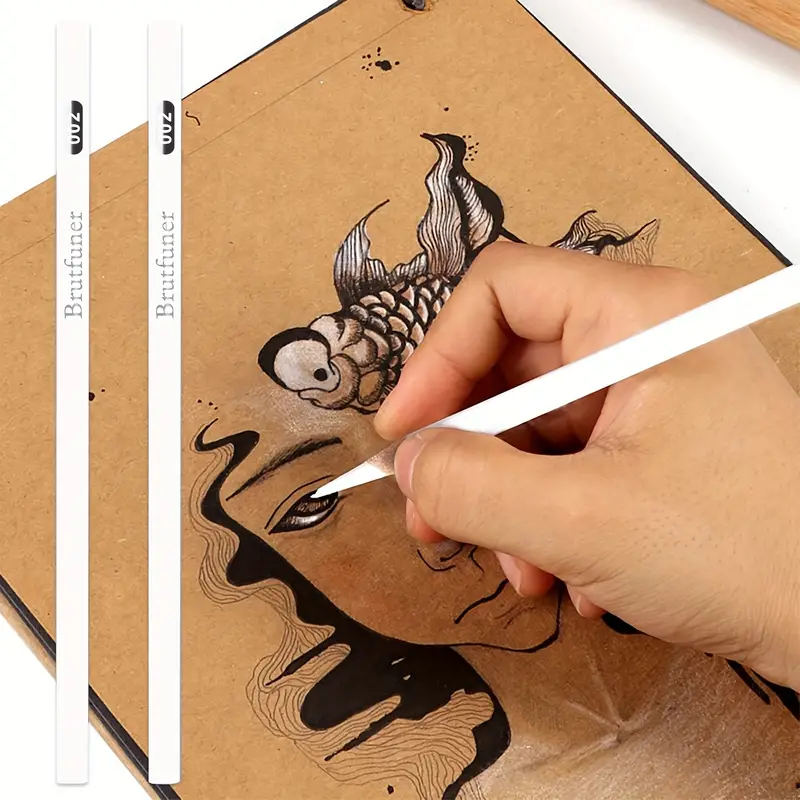
Leveraging Negative Space
Utilizing the negative space around your subject matter is a powerful technique in charcoal drawing. With a clean eraser, you can carve out light from the darkness, creating highlights that define edges or add to the composition’s contrast. Negative space drawing will encourage you to think inversely about light, often resulting in a dramatic and captivating piece. This approach is particularly striking with charcoal, given the medium’s inherent depth and richness.
Troubleshooting Common Issues
Managing Dust and Residue
Charcoal pencils tend to create dust and residue, which can be challenging to manage. To mitigate this, tap your drawing gently over a trash bin to remove loose particles. Also, keep a small brush or piece of cloth handy to sweep away excess dust from your work without smearing. If your drawing is already set with a workable fixative, this will be less of an issue.
Erasing and Making Corrections
Mistakes are part of the drawing process, and with charcoal pencils, they are relatively easy to correct. A kneaded eraser can gently lift charcoal from the paper, allowing you to redefine lines or lighten areas. For harder erasures, a rubber or vinyl eraser can cleanly remove charcoal. It’s essential to approach corrections carefully to avoid damaging the paper surface.
In conclusion, charcoal pencils offer a world of artistic possibility, combining the depth and richness of charcoal with the precision of a pencil. They allow artists to express themselves in bold and refined ways, effortlessly transitioning from broad strokes to delicate details. Understanding the types of charcoal pencils available, mastering various techniques, caring for your tools, and preserving your art are all essential aspects of making the most out of this versatile medium. Whether you’re a beginner or a seasoned artist, charcoal pencils can be an excellent addition to your artistic toolkit, helping you bring dynamic contrast and emotion to your drawings.